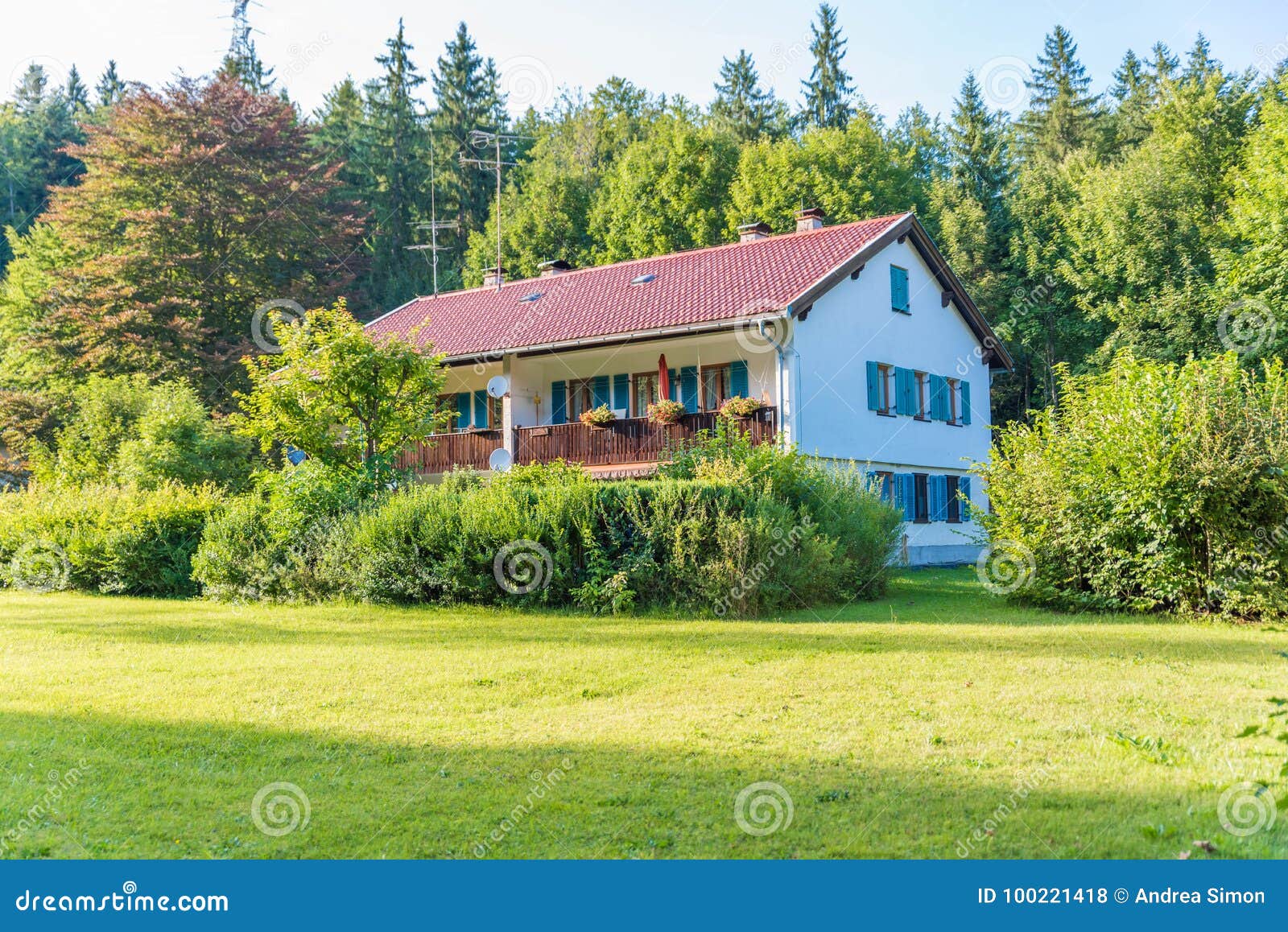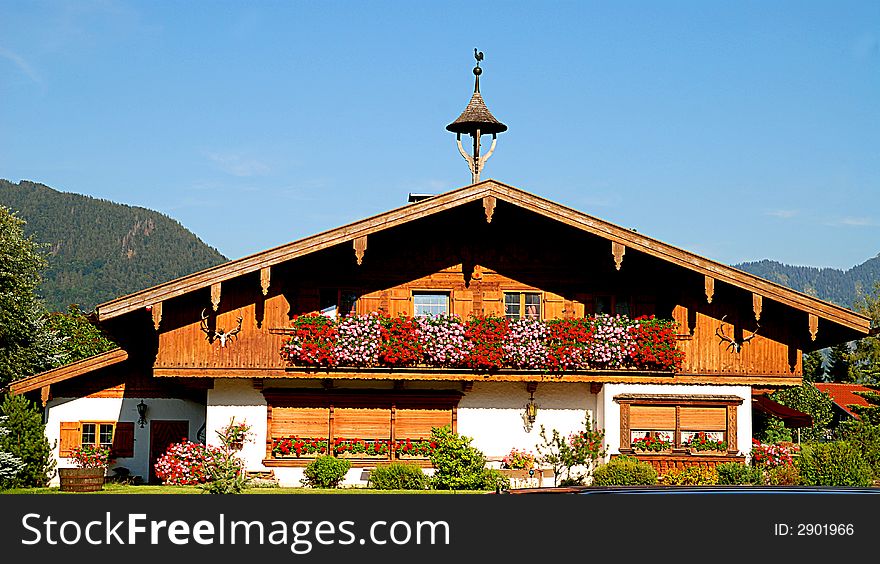Bavarian House: A Journey Into Architectural Elegance And German-Inspired Charm
When it comes to architectural design, the Bavarian house stands as a testament to timeless beauty and functionality. Inspired by the traditional homes of Bavaria, Germany, these structures combine stunning aesthetics with practical living spaces. Whether you're a fan of European architecture or simply curious about this unique style, the Bavarian house offers something for everyone.
Bavarian houses have captured the hearts of homeowners and architects alike, thanks to their distinctive features and cultural significance. Originating from the picturesque landscapes of Bavaria, these homes have transcended borders, becoming a popular choice for those seeking a blend of tradition and modernity.
In this comprehensive guide, we will delve into the world of Bavarian houses, exploring their history, design elements, construction techniques, and the reasons behind their growing popularity. Whether you're planning to build your dream Bavarian home or simply want to learn more about this fascinating architectural style, this article has everything you need to know.
Read also:Kevin Gates And Wife Exploring Their Love Story Journey And Life Together
Table of Contents
- History of Bavarian House
- Key Design Elements of Bavarian Houses
- Construction Techniques Used in Bavarian Homes
- Materials Commonly Used in Bavarian House Construction
- Interior Design Ideas for Bavarian Houses
- Cost Considerations for Building a Bavarian House
- Modern Adaptations of Bavarian Architecture
- Maintenance Tips for Bavarian Homes
- Popularity of Bavarian Houses Around the World
- The Future of Bavarian House Design
History of Bavarian House
The origins of the Bavarian house can be traced back to the Bavarian region in southern Germany, where the architecture reflects the rich cultural heritage of the area. Historically, these homes were designed to withstand the harsh alpine climate, while also serving as functional living spaces for families.
One of the earliest examples of Bavarian architecture dates back to the Middle Ages, where timber-framed houses (Fachwerkhäuser) were common. Over time, the style evolved, incorporating elements such as steep roofs, large windows, and ornate decorations. Today, Bavarian houses are celebrated not only in Germany but also in other parts of the world.
Evolution of Bavarian Architecture
The evolution of Bavarian architecture can be divided into several key periods:
- Medieval Period: Characterized by simple timber-framed structures.
- Renaissance Influence: Introduction of more elaborate designs and decorations.
- Modern Era: Adaptation of traditional elements into contemporary homes.
Key Design Elements of Bavarian Houses
Bavarian houses are instantly recognizable due to their unique design features. From their steep roofs to their vibrant facades, every aspect of these homes tells a story of tradition and craftsmanship.
Steep Roofs and Large Eaves
One of the most defining characteristics of a Bavarian house is its steeply pitched roof, designed to allow snow to slide off easily during the winter months. The large eaves provide additional protection against the elements, making these homes ideal for cold climates.
Timber Framing and Stucco Walls
Timber-framed construction is a hallmark of Bavarian architecture. The exposed wooden beams are often painted in bold colors, creating a striking contrast against the stucco walls. This combination not only enhances the aesthetic appeal but also provides structural stability.
Read also:2009 Kim Kardashian A Year That Defined A Decade
Construction Techniques Used in Bavarian Homes
Building a Bavarian house requires specialized construction techniques that prioritize durability and energy efficiency. Modern builders often combine traditional methods with innovative technologies to create homes that meet contemporary standards.
Foundation and Structural Integrity
A solid foundation is crucial for any Bavarian house, especially in regions prone to extreme weather conditions. Builders use reinforced concrete and advanced engineering techniques to ensure the structural integrity of these homes.
Energy Efficiency
Modern Bavarian houses are designed to be energy-efficient, featuring insulated walls, double-glazed windows, and solar panels. These features help reduce energy consumption while maintaining a comfortable indoor environment.
Materials Commonly Used in Bavarian House Construction
The choice of materials plays a vital role in the construction of Bavarian houses. Traditional materials such as wood, stone, and stucco are often combined with modern alternatives to create durable and visually appealing structures.
Wooden Beams and Flooring
Wood is a primary material used in Bavarian house construction. Hardwood species like oak and fir are favored for their strength and aesthetic appeal. The wooden beams are often left exposed, adding character to the interior spaces.
Stone and Brick Accents
Stone and brick are commonly used for exterior accents and interior fireplaces. These materials not only enhance the visual appeal but also contribute to the thermal mass of the home, helping to regulate indoor temperatures.
Interior Design Ideas for Bavarian Houses
The interior of a Bavarian house is as important as its exterior. Homeowners have the opportunity to create cozy and inviting spaces that reflect their personal style while staying true to the traditional Bavarian aesthetic.
Color Palette and Textures
A neutral color palette with earthy tones is often used in Bavarian interiors. Textured materials like wood, stone, and woven fabrics add depth and warmth to the living spaces. Incorporating pops of color through accessories can help create a lively atmosphere.
Furniture and Decor
Traditional Bavarian furniture is characterized by its solid construction and intricate carvings. Modern interpretations of this style blend functionality with elegance, offering a range of options for homeowners. Decorative elements such as antlers, lanterns, and folk art can further enhance the Bavarian ambiance.
Cost Considerations for Building a Bavarian House
Building a Bavarian house involves several cost considerations, from materials and labor to permits and design fees. While these homes can be more expensive than standard builds, their long-term value and energy efficiency make them a worthwhile investment.
Material Costs
High-quality materials such as timber, stone, and stucco contribute significantly to the overall cost of a Bavarian house. However, the durability and aesthetic appeal of these materials justify the expense.
Labor and Design Fees
Hiring skilled craftsmen and architects familiar with Bavarian architecture is essential for achieving an authentic look. While this may increase upfront costs, the expertise ensures a high-quality build that stands the test of time.
Modern Adaptations of Bavarian Architecture
In recent years, architects have embraced modern adaptations of Bavarian architecture, blending traditional elements with contemporary design principles. These adaptations cater to the needs of modern homeowners while preserving the essence of Bavarian style.
Sustainable Design
Sustainability is a key focus in modern Bavarian architecture. Builders incorporate eco-friendly materials and energy-efficient systems to reduce the environmental impact of these homes. Solar panels, rainwater harvesting systems, and green roofs are just a few examples of sustainable features.
Smart Home Integration
Smart home technology has become increasingly popular in Bavarian houses, allowing homeowners to control lighting, heating, and security systems with ease. This integration enhances convenience and energy efficiency without compromising the traditional aesthetic.
Maintenance Tips for Bavarian Homes
Maintaining a Bavarian house requires regular care and attention to ensure its longevity and aesthetic appeal. From roof inspections to wood preservation, homeowners should prioritize routine maintenance to protect their investment.
Roof Maintenance
Regular inspections of the roof are essential to identify and address any issues before they escalate. Cleaning gutters and ensuring proper drainage can help prevent water damage and prolong the lifespan of the roof.
Wood Preservation
Wooden elements such as beams and flooring require periodic treatment to protect against moisture, insects, and UV damage. Using high-quality sealants and stains can enhance the durability and appearance of these features.
Popularity of Bavarian Houses Around the World
The popularity of Bavarian houses has grown significantly in recent years, with homeowners in various parts of the world embracing this architectural style. Countries with similar climates to Bavaria, such as Canada and parts of the United States, have seen a rise in Bavarian-inspired homes.
Cultural Influence
Bavarian architecture has influenced other architectural styles, particularly in regions with strong German cultural ties. Festivals and events celebrating Bavarian traditions further promote the appeal of these homes, attracting admirers from all walks of life.
Global Recognition
With the help of social media and design platforms, Bavarian houses have gained global recognition. Homeowners and architects share their projects online, inspiring others to incorporate Bavarian elements into their own designs.
The Future of Bavarian House Design
The future of Bavarian house design looks promising, with advancements in technology and materials paving the way for innovative adaptations. As sustainability becomes a priority, architects are exploring new ways to integrate eco-friendly features into traditional Bavarian homes.
Innovative Materials
Research into sustainable materials such as cross-laminated timber (CLT) and recycled composites is opening up new possibilities for Bavarian house construction. These materials offer enhanced performance while reducing environmental impact.
Smart Living Solutions
Smart home technology continues to evolve, offering homeowners greater control over their living environments. Future Bavarian houses may feature advanced automation systems that optimize energy use and enhance comfort.
Conclusion
In conclusion, Bavarian houses represent a harmonious blend of tradition and innovation, offering homeowners a unique architectural experience. From their rich history and distinctive design elements to their modern adaptations and global popularity, these homes continue to captivate audiences worldwide.
We invite you to share your thoughts and experiences with Bavarian houses in the comments below. Whether you're planning to build one or simply appreciate their beauty, your feedback is valuable to our community. Don't forget to explore our other articles for more insights into architecture and design!


